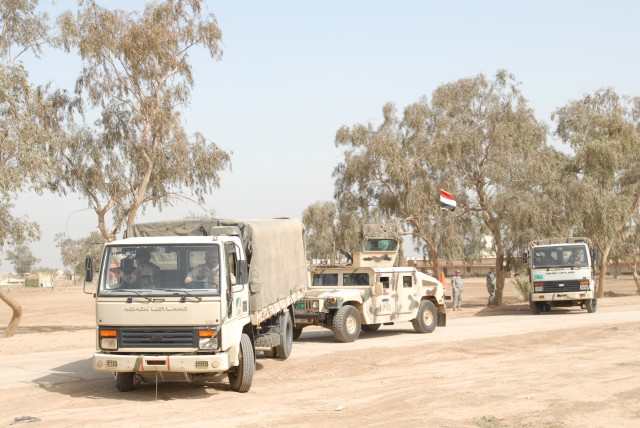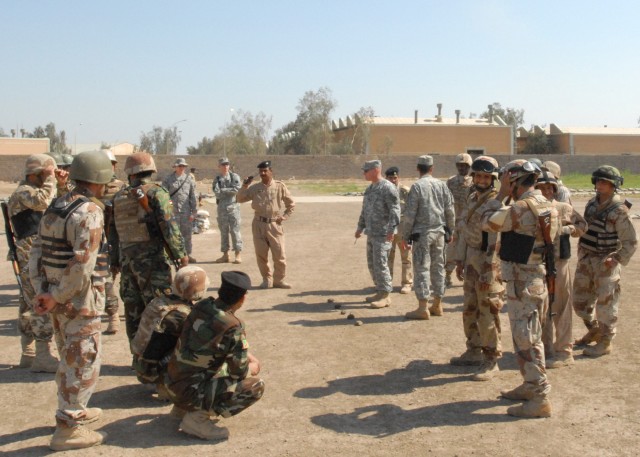CAMP TAJI, Iraq- Threats to Soldiers come in all shapes and sizes on the streets and roadways of Iraq. Constant training for the unexpected is the norm.
For Pennsylvania Army National Guard Soldiers, simulating improvised explosive device attacks April 7 here served as a training objective for their Iraq Army counterparts.
The Soldiers, from Headquarters and Headquarters Company, 328th Brigade Support Battalion, 56th Stryker Brigade Combat Team, worked with an Iraqi Army commander over the past two weeks to conduct individual Soldier task training for an Iraqi Army logistics platoon. The U.S. trainers capped training with convoy exercises designed to make the Iraqi Army Soldiers put those individual skills to work as a team.
"This was the culmination training for the convoy STX [situational training exercise] lanes," said Capt. William Salisbury, the HHC commander.
Salisbury explained that he and members of his Logistics Tactical Advisory Team asked the commander of the Iraqi Army's 1st Battalion, 35th Brigade, what type of training assistance he would like from Coalition forces for his logistics unit.
"It came up that they wanted convoy training," Salisbury said. "Overall it was a really good step for them toward moving their own convoys and to doing their logistics. It's been really rewarding to help them. I think they're very motivated."
As the convoy made passes through a training area U.S. Soldiers threw smoke and flash bang grenades in the vicinity of the vehicles; designating a vehicle as being hit by an IED. Iraqi Army Soldiers then reacted by completing tasks such as pulling security, tending to any simulated casualties and moving the disabled vehicle to safety.
"Their work ethic is really strong and they learned quickly," said Sgt. Aaron Acevedo of Lancaster, Pa., of the Iraqi Army Soldiers. "Show them something once and they got it. They ate it up. They did excellent. It was a relationship-building experience."
The movements of the Iraqi Army Soldiers improved through the course of the training, winning the platoon praise from its commander. Staff Sgt. Christopher Diehl, of York, a 328th operations non-commissioned officer, said the level of chaos injected into the training scenarios increased as the event progressed.
"We beat them up there at the end," he said of an iteration in which the initial attack on a vehicle was followed by a second simulated attack, producing additional simulated casualties and making the trainees respond to multiple actions.
"My impression is they want to learn everything. They're like a sponge," Diehl said. "We tried to implement leadership development in the NCO ranks."










Social Sharing